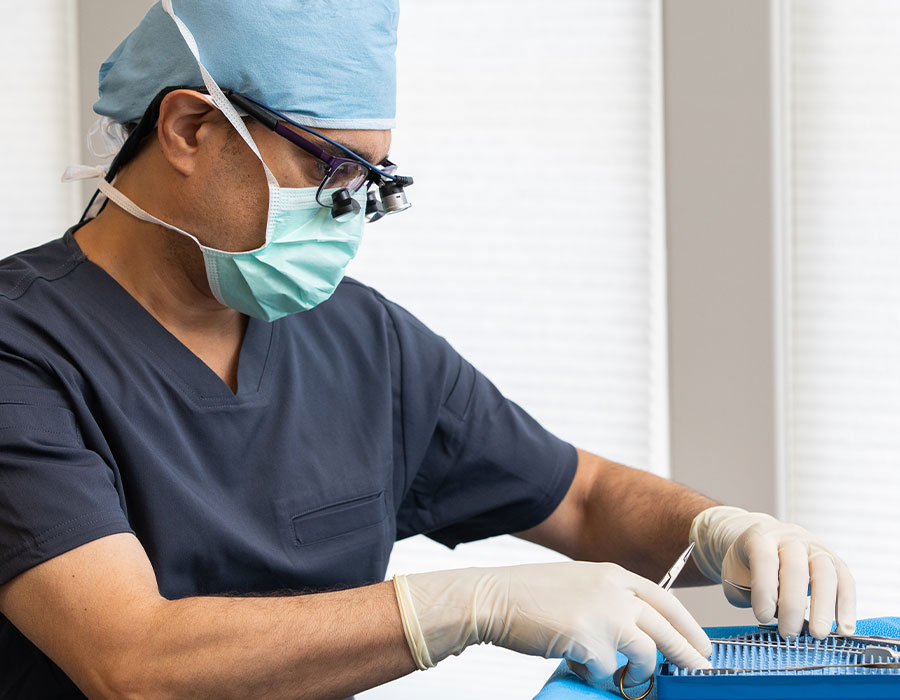Facetite & Accutite
Minimally invasive RF procedures for facial and neck rejuvenation, offering skin tightening and contouring without major surgery.

Minimally invasive RF procedures for facial and neck rejuvenation, offering skin tightening and contouring without major surgery.


Are you looking to lose years off your face but are intimidated by invasive surgeries with extensive recovery periods and potential scarring? If you are suffering from stubborn sagging skin around the face and neck or loss of definition and want to rejuvenate your appearance, FaceTite may be just the thing you’re looking for.

FaceTite is a minimally invasive cosmetic procedure that helps with reducing stubborn sagging skin on the face and neck and loss of definition by enhancing the natural contours of the face. As skin ages, it loses elastin and collagen and the muscles beneath the surface stretch resulting in a droopy appearance. This treatment uses a revolutionary new radiofrequency device called EmbraceRF to eliminate fat, tighten loose skin, stimulate collagen production and enhance the natural contours of the face. Because there are no inorganic substances injected into the skin to replace fat loss, this treatment is often referred to as the “most natural facelift.” The procedure is completed in a fraction of the time of other surgical options and comes with a much shorter recovery period with natural results. Some patients are able to return work in as little 3-5 days.
First the patient is placed under local anesthetic to ensure pain-free comfort. A small access point is then made in the skin of the desired area with a medium-size needle, into which a slender probe is inserted, gliding below the skin in the subcutaneous tissue where the fat and collagen reside. In a process called Radiofrequency-Assisted Lipolysis (RFAL), radiofrequency energy is then delivered between the internal probe and the external electrode, safely heating the fat and soft tissue of the skin. The heat created by this process stimulates collagen and induces fat cell death, resulting in a tighter, younger-looking appearance. This is all done by Dr. Amadi in the comfort of our office in Seattle and the entire procedure usually takes about one to two hours to complete.

Patients who are looking for a solution for some of the common signs of facial aging, but who do not wish (or need) to undergo surgery, usually make the best candidates for the procedure. However, though FaceTite works on almost all skin types, keep in mind that this treatment is not right for everyone, and so a consultation is required to determine candidacy.
Suitable candidates are usually late-30’s to early-50’s, who are beginning to see mild to moderate signs of facial aging such as sagging skin of the face and neck, unwanted fat deposits in the jowls and underneath the chin, and loss of jawline and neck definition. Patients of this age have not usually experienced the type of severe facial laxity of more advanced aging that usually requires more invasive surgical procedures. FaceTite also has the capability of treating hard-to-reach areas, such as nasolabial folds and malar bags that other methods are unable to address.
Another category of patients that may be good candidates for FaceTite are patients who have already undergone a face and neck lift, but are again developing face and neck laxity as the years have ticked on. These patients may be a bit older and not interested in repeating a major surgery with general anesthetic at an advanced age.
Finally, some patients may never feel comfortable with invasive surgical procedures that require extensive incisions and general anesthesia, even though they may be excellent candidates. For these patients, FaceTite provides a minimally invasive treatment option that can provide significant improvement to turn back the clock five or more years, under local anesthesia and with minimal downtime.
Due to its minimally invasive nature, recovery is much shorter than other cosmetic surgeries. Patients can often go back to work 3-4 days after the procedure as the swelling quickly recedes. Since the treatment stimulates collagen growth and fat cell death, results will continue to improve as collagen regenerates and skin naturally tightens; you will begin to see the results 6 to 8 weeks after your treatment and improvements will continue up to 9 months after the procedure.
Patients often ask how long the improvements last. A better way to explain the results is that the treatment turns back the clock about 5 years, sometimes more. Once the final results are achieved, the aging process restarts. The results can be maintained for longer duration with proper skin care, including a daily high-SPF sunscreen, and further enhanced with botox and fillers.

There is significant swelling right after the procedure due to fluid injection with the local anesthetic. Though rare, you may also experience minimal bruising in the days following your treatment. The majority of the swelling recedes in 3-4 days, and the residual edema should subside within a week. The procedure and recovery are essentially pain-free, so many patients are able to resume normal day-to-day activities almost immediately, and are back to work within a few days. Although there are no long incisions, no stitches are required and scarring is almost never encountered. Though recovery time is much shorter than those of other cosmetics surgeries, it is still recommended to avoid strenuous physical activity for two weeks post-treatment. Dr. Amadi and his team will walk you through all necessary measures to ensure a speedy, comfortable recovery.
FaceTite is FDA certified and is considered one of the safest methods of facial rejuvenation and contouring. The radiofrequency used in the treatment is the same that has been safely used in operating rooms and other medical procedures for decades. Since heat is generated via radiofrequency energy during the treatment, there is a small risk of skin burns but the device is equipped with a dual temperature sensor to help prevent this from occurring. Other unlikely complications include asymmetrical contouring, temporary numbness and nerve injury however, these side effects are very rare and almost always temporary.
It is very important that this procedure is performed by a highly qualified surgeon such as Dr. Amadi, in order to minimize any risks of complication. Our thorough preoperative education will walk you through all the steps of the treatment, risks and complications, and recovery, and Dr. Amadi’s experience and expertise will ensure you are in safe, capable hands –the best in Seattle!

Team
Focusing on a natural and age-appropriate look, Dr. Amadi will deliver the finest personalized care, giving you the results you desire.
Meet Dr. AmadiTraditional surgical face-and-neck-lift surgeries, which are still considered the gold standard for a more dramatic lower face/neck rejuvenation, require general anesthetic, long incisions and are often performed in combination with skin resurfacing procedures. These typically have a longer recovery period and may leave visible scars. Though FaceTite is not, by any means, a replacement for more invasive surgical procedures, it is an effective alternative solution for those who are just beginning to see the symptoms of maturing skin and facial features. It is also a suitable option for those new to cosmetic surgery or whose lives are not conducive to extensive downtimes. For advanced aging of the lower face and neck, more invasive surgical techniques are required. In these cases, Dr. Amadi recommends a deep plane face and neck lift. However, FaceTite is a perfect interim solution for those looking to stave off those early indications until a surgical method is prescribed.
Although Thermage is also a radiofrequency device, it attempts to deliver the energy through intact skin to the underlying soft tissue in hopes of tightening collagen within the deeper skin and the subcutaneous tissue. Thermage is often ineffective for many patients, and can have unpredictable results because the RF energy is not effectively transmitted through intact skin. Attempts to deliver higher energy can lead to skin burns and is very painful. Even when treatment is effective, the results are mild at best. Furthermore, even with application of topical anesthetic cream, treatments can be quite uncomfortable since local anesthesia is not administered. Simply put, Facetite delivers the kind of results that Thermage has always promised, but rarely delivered.
While the goal of Ultherapy and FaceTite procedures is similar, it is achieved through different means. Both treatments are minimally invasive in nature but Ultherapy uses ultrasound energy as opposed to FaceTite’s Radio Frequency Assisted Lipolysis. With Ultherapy, ultrasound energy is used in hopes of tightening the skin and decreasing wrinkles while RFAL has the benefit of tightening the deep tissue while also dissolving fat. Some patients may be drawn to Ultherapy because of the little-to-no recovery time, however, because Ultherapy is most often administered without local anesthesia, the treatment is also known to be quite painful. RFAL uses a local anesthetic, so recovery is slightly longer, but the procedure and subsequent down-time are pain-free.
So, is one better than the other? Yes! There are substantial differences between the two in efficacy, longevity of results, and ultimate cost. FaceTite RFAL results are significant, predictably visible, and can last up to five years or more, whereas Ultherapy results are mild at best, begin to decrease after 12 months, and require yearly application. Due to the fact that multiple treatments are required to see any results, although the initial expense of Ultherapy may be less, in the long-term, Ultherapy will wind up being the costlier option, while delivering questionable results. Still unsure? To determine whether FaceTite is truly the best option for you, book a consultation with Dr Amadi and he can answer all of your questions.